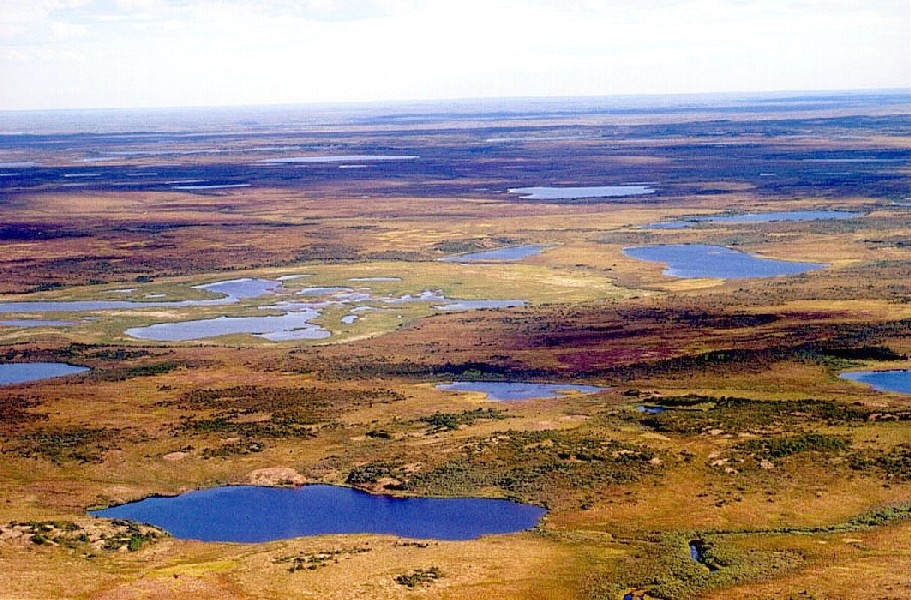|
Steller's Eider
Steller's eider (''Polysticta stelleri'') is a migrating Arctic diving duck that breeds along the coastlines of eastern Russia and Alaska. It is the rarest, smallest, and fastest flying of the eider species. Amongst the Inupiat, Steller's eider is known as the "bird that sat in the campfire", referring to the burnt-ish color of the male's belly. Due to the extensive contraction of its breeding range, the Alaska-breeding population of Steller's eider was listed as vulnerable in 1997 by the International Union for the Conservation of Nature ( IUCN). The species is protected in Russia and the U.S. and is the subject of an ongoing recovery plan by the European Union and U.S. Fish and Wildlife Service. Taxonomy Steller’s eider is in the family Anatidae along with other ducks, geese, and swans and is the only species in the genus Polysticta. Despite its name, it is more distantly related than all other extant eider species which are part of the Somateria genus. Steller's eider w ... [...More Info...] [...Related Items...] OR: [Wikipedia] [Google] [Baidu] |
Thomas Campbell Eyton
Thomas Campbell Eyton JP, DL (10 September 1809 – 25 October 1880) was an English naturalist whose fields were cattle, fishes and birds. He was a friend and correspondent of Charles Darwin though he opposed his theories. Eyton was born at Eyton Hall, near Wellington, Shropshire. He studied at St John's College, Cambridge, where he was a contemporary and friend of Charles Darwin. After succeeding to the estate in 1855 Eyton built a large natural history museum at Eyton Hall that included a range of bird skins and skeletons, described as "one of the finest in Europe". Besides Darwin, Eyton enjoyed a correspondence with other naturalists including Louis Agassiz, Asa Gray and Alfred Russel Wallace. Eyton published ''History of the Rarer British Birds'' (1836), ''A Monograph on the Anatidae, Or Duck Tribe'' (1838), ''A History of Oyster and Oyster Fisheries'' (1858) and ''Osteologia Avium'' (1871–78). He established in about 1842 the ''Herd Book of Hereford Cattle'', whi ... [...More Info...] [...Related Items...] OR: [Wikipedia] [Google] [Baidu] |
Tundra Looking South Toward Brooks Range, Alaska
In physical geography, tundra () is a type of biome where tree growth is hindered by frigid temperatures and short growing seasons. The term ''tundra'' comes through Russian (') from the Kildin Sámi word (') meaning "uplands", "treeless mountain tract". There are three regions and associated types of tundra: Arctic tundra, alpine tundra, and Antarctic tundra. Tundra vegetation is composed of dwarf shrubs, sedges, grasses, mosses, and lichens. Scattered trees grow in some tundra regions. The ecotone (or ecological boundary region) between the tundra and the forest is known as the tree line or timberline. The tundra soil is rich in nitrogen and phosphorus. The soil also contains large amounts of biomass and decomposed biomass that has been stored as methane and carbon dioxide in the permafrost, making the tundra soil a carbon sink. As global warming heats the ecosystem and causes soil thawing, the permafrost carbon cycle accelerates and releases much of these soil-contained ... [...More Info...] [...Related Items...] OR: [Wikipedia] [Google] [Baidu] |
Down Feather
The down of birds is a layer of fine feathers found under the tougher exterior feathers. Very young birds are clad only in down. Powder down is a specialized type of down found only in a few groups of birds. Down is a fine thermal insulator and padding, used in goods such as jackets, bedding ( duvets and featherbeds), pillows and sleeping bags. The discovery of feathers trapped in ancient amber suggests that some species of dinosaur may have possessed down-like feathers. Description and etymology The word ''down'' comes from the Old Norse word ''dúnn'', which had the same meaning as its modern equivalent. The down feather is considered to be the most "straightforward" of all feather types. It has a short or vestigial rachis (shaft), few barbs, and barbules that lack hooks. There are three types of down: natal down, body down and powder down. Natal down is the layer of down feathers that cover most birds at some point in their early development. Precocial nestlings ar ... [...More Info...] [...Related Items...] OR: [Wikipedia] [Google] [Baidu] |
.jpg)

